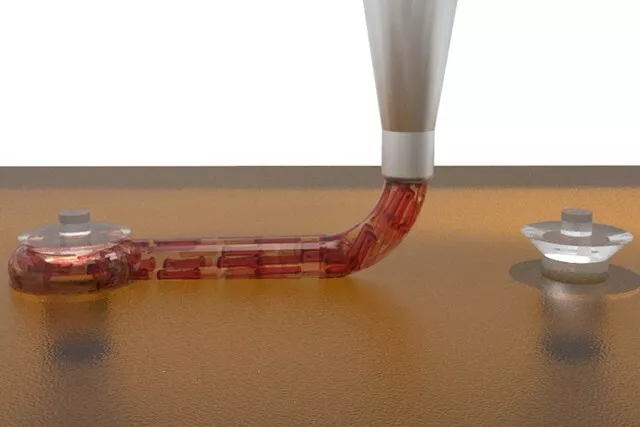Researchers have used silica gel and even the patient's own cells to print the heart in 3D, but they have not achieved all the real functions, and they are not good for repairing the heart. However, some progress has been made in this regard. a team at the wise Institute of Harvard University has developed a technology for 3D printing of long cardiac filaments, which will develop into muscle like filaments and contract**
This new method mimics the complex arrangement of cardiac contractile elements (a difficult feat so far) and produces thick enough tissue for cardiac regeneration therapy.

The system is an improved version of Wyss' existing Swift (sacrificial writing in functional organization) bioprinting technology. Their method creates a platform with 1050 holes, each with two microscopic pillars. The scientists filled these holes with human induced pluripotent stem cells (young cells that can develop into various forms), a protein collagen and cells used to form connective tissue. This combination forms a dense structure, which is arranged along the axis connecting the micro columns. The team then lifted the resulting organ building block from the pillar, used it to create bioprinting ink, and used the movement of the 3D printer head to further assist in alignment.
This is just a small piece of the heart. Although this technology has produced relatively high output, there is still much work to be done before a fully functional 3D printing organic heart appears.
The research team believes that their work may still be useful before reaching the milestone of the whole heart. 3D printed filaments can be used to replace scars after a heart attack or to create improved disease models. They can even repair the holes of newborns with congenital heart defects and grow up with these children. Simply put, a damaged heart may not be as permanent a problem as it is today.